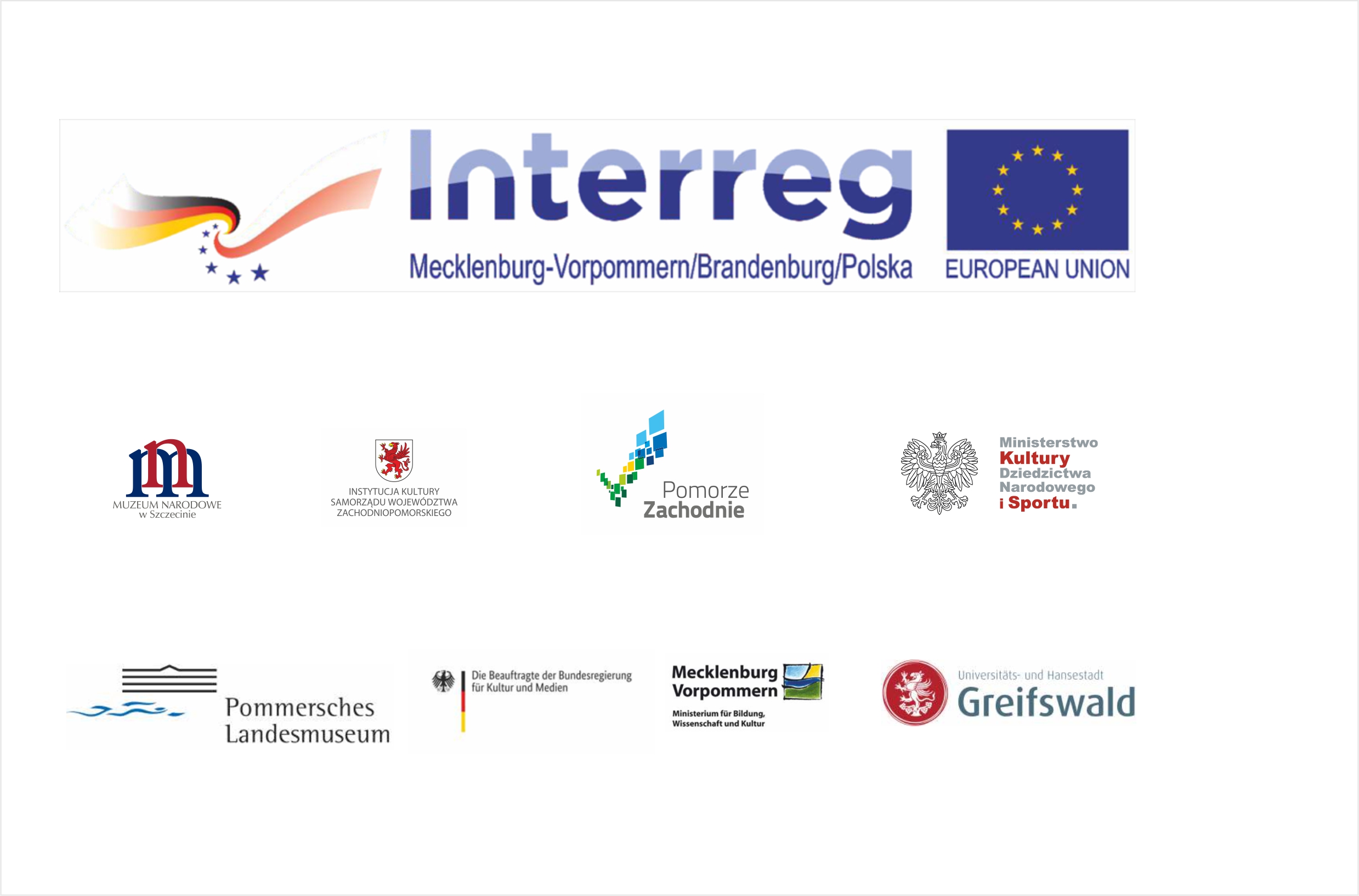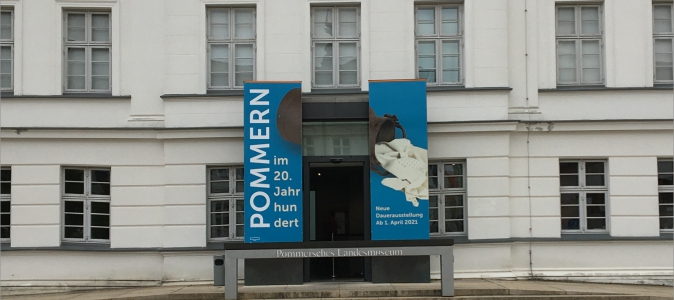History of Pomerania in the 20th century. From World War I to Polish accession to the Schengen Area: epilogue of the permanent exhibition on the history of a shared region.
The Pomeranian State Museum in Greifswald invites its Visitors to see a new, and the final at the same time, part of the exhibition dedicated to Pomerania in the 20th century. The permanent exhibition on the history of the region has been complemented and now embraces around 14 thousand years, beginning with the first traces of hunter-gatherers and finishing with the Polish accession to the Schengen Area in 2007, which resulted in opening the borders.
According to the Director of the Greifswald museum, Uwe Schröder, PhD, the exhibition is characterised by three specific dimensions: "Firstly, it is a common EU project, shared with The National Museum in Szczecin. Secondly, we have been constantly accompanied by the witnesses of those times, who provided us with their assistance in the conceptual field. Thirdly, we cooperate with Polish historians, who had moved to Greifswald, who have lived here and have been participating in creating the exhibition."
The twentieth century, with its wars, numerous falls of systems and great population exchange, might have been the most important caesura in the history of the region. The very name "Pomerania" almost entirely disappeared in the times of German Democratic Republic. Only during last three decades, the region has been gradually re-discovering its structures, which had been created within centuries. The exhibition presents numerous aspects of these caesuras and continuities.
Interesting museum objects have been supplemented with multimedia stations and installations which present numerous personal perspectives of the witnesses.
Lech Karwowski, the Director of The National Museum in Szczecin, appreciates good cooperation: "With carryying out this project, as well as the previous ones, we have shown that it is possible to establish a model of profound, cross-border cooperation in research and popularisation of the art of the history of old Pomerania, without eliminating the differences in the ways of understanding them, as they may be useful for better comprehension of the mysteries of the past. The exhibition which has already been completed at your Museum will certainly become the basis for further, inspiring discussion.“
"COMMON HERITAGE, COMMON FUTURE" PROJECT
The Pomeranian Museum's exhibition is a part of the project "Common Heritage, Common Future. Central Museums of Pomerania Present History and Culture of Pomerania", shared with The National Museum in Szczecin. The project is financed by UE Interreg-V-A programme. The total project subsidy amounts to EUR 2 million, 1.4 million of which is on the side of The Museum of Pomerania. The project has been carried out in years 2018-2021.
Within the subsequent months, the exhibition will be complemented with a catalogue and a museum application with broader audio content. Moreover, we hope to be able to offer guided tours, lectures and other related events soon.
EXHIBITION SECTIONS
POMERANIA BEFORE 1945
From a room where the history of development of seaside resorts is presented in a merry, summer atmosphere, we proceed to the new section through a corridor over the dark Croy hall. The first room of the new exhibition is dedicated to the events related to the World War I. The visitor will face a large-size wallpaper with excerpts from letters sent from the frontline, obituaries of killed Pomeranian soldiers and newspaper headlines reporting the war. Large wallpapers are the exhibition's regular means of presentation.
According to the provisions of the Treaty of Versailles, Pomerania became a border zone. The economic situation in the Weimar Republic deteriorated as a result of inflation, of the agricultural crisis and of the great economic crisis, which led to political radicalisation. In order to help the fishermen of the village of Freest, whose situation was dramatic, the district governor of Greifswald, Walter Kogge, initiated carpet weaving. The exhibition shows a carpet that the fishermen gave to the governor in 1929 to express their gratitude. Shortly after taking power in the country, the National Socialists began preparations for war. Pomerania was becoming an important military centre. Mention should be made, for example, of the Military Research Institute in Peenemünde and the V1 and V2 missiles constructed there. Pomerania was also the first province of the Reich from which Jewish citizens and people from medical institutions were deported. The visitors can learn more about this topic by studying reproductions of Kennkarte identity documents of Pomeranian Jews deported in February 1940 or watching interviews with scarce survivors at the multimedia station. At the end of the World War II, hundreds of thousands of people escaped to the West or were expelled. The witnesses of those events tell about their experience in over 60 videos.
AFTER 1945: POMERANIAN EXPELLEES IN THE FEDERAL REPUBLIC OF GERMANY
The exhibition divides the period after 1945 into three narrative threads. In the section on the history of the expellees in the Federal Republic of Germany, we emphasize, apart from the economic and organizational difficulties of the new life, their attitude to their loss. Almost 900,000 of the 1.5 million expelled Pomeranians lived in the Federal Republic in 1952. It was difficult to start new lifves. The greatest problems were met by the Act on the Equalisation of War Burdens, passed in 1952, according to which compensations should be paid to expellees. Besides material losses, the expellees had to deal with the emotional loss of their small homelands and the traumatic experiences of the escape and expulsion. Establishing the patronage over the towns lost by Germany at the particular levels of administration was a clear political signal. One of the main points of this part of the exhibition is a room dedicated to the town of Pyritz (today Pyrzyce in the West Pomeranian Voivodeship), the exposition of which used to be maintained in the town of Korbach in Hesse to cultivate the memory of this small Pomeranian homeland. The room makes it possible to understand the various strategies of dealing with the loss: the expellees did it by creating numerous models of their hometowns or their fathers' farms, or by sewing traditional folk costumes.
POMERANIA IN THE GERMAN DEMOCRATIC REPUBLIC
After 1945, the largest part of Vorpommern belonged to the GDR. On account of the exhibition, one may learn about the events that largely affected Pomerania, such as the expropriation of landowners. We show interior items of a guesthouse located on the island of Rügen, the owners of which were expropriated as part of the "Operation Rose"; the dashboard of the reactor block of the nuclear power plant near Lubmin or the compass that was used during an unsuccessful attempt to escape through the Baltic Sea. The accounts about everyday life in GDR are provided by interviews with witnesses of those times, recorded exclusively for the exhibition. The awareness of the historical community of Pomerania, both in the German part of Vorpommern in the GDR and in West Pomerania in the Polish People's Republic, was increasingly marginalised. The very name "Pomerania" became politically unwanted. We show the continuity and turning points of the region's history on both sides of the border.
POMERANIA IN THE POLISH PEOPLE'S REPUBLIC
The third narrative thread embraces Further Pomerania and a part of Vorpommern with its main city of Szczecin. This is where numerous settlers found their new homeland after the city was taken over by the Polish administration. They were Poles from the Eastern Borderlands, or internal migrants, like Ukrainians (Lemkos and Boykos). The reconstruction of heavily destroyed region was a great challenge. The already-existent structures were frequently used for this purpose. For instance, the "Junak" motorcycle, called a Polish Harley-Davidson, was built in the facilities of the former Stoewer factory in Szczecin. The events like December 1970 or the rise of Solidarity movement in August 1980 have been of great importance. A separate room has been dedicated to them. The concept of this part of the exhibition was created by Polish historians.
At the end of the exhibition, the visitors find themselves in the heart of a unique landscape of the Pomorze – Pommern region: a land by the sea.
VISITOR INFO
The Museum of Pomerania
Rakower Straße 9
17489 Greifswald, Germany
www.pommersches-landesmuseum.de
Opening hours: Tuesday - Saturday, 10.00 A.M. - 6.00 P.M.
Please find out about the current sanitary restrictions before your visit, as they may vary seasonally! Depending of changeable Covid-19 infection rate in the district of Vorpommern-Greifswald, it may be necessary to book your admission tickets in advance (+49 3834-83120 or This email address is being protected from spambots. You need JavaScript enabled to view it.). Temporary closing of the Museum may be probable at certain dates.
EXHIBITION FACTS AND FIGURES
548 exhibits complemented with 15 multimedia stations have been exposed in the area of 310 m² at the first floor of Graues Kloster.
The majority of the objects belong to the collection of The Museum of Pomerania. Some of them have been borrowed from German and Polish entities.
Curators: Gunter Dehnert, Heiko Wartenberg, Dr. Stefan Fassbinder, Dr. Tomasz Ślepowroński, Dr. Andrzej Hoja
Scientific Council: Prof. Dr. Thomas Stamm-Kuhlmann, Greifswald, Prof. Dr. Mathias Niendorf, Greifswald, Prof. Dr. Rafał Makała, Szczecin/Gdańsk, Prof. Dr. Kilian Heck, Greifswald, Dr. Ingrid Ziehe, Berlin, Prof. Dr. Martin Onnasch, Greifswald (until 2014), Prof. Dr. Werner Müller, Rostock (until 2014)
Exhibition design: Bertron Schwarz Frey GmbH, Ulm/Berlin, studio 211, Stuttgart
Exhibition graphic design: Bertron Schwarz Frey GmbH, Ulm/Berlin, Monika Richter (Büro für Visuelles, Stuttgart)
Interviews with witnesses: Michael Majerski (Arkonafilm, Berlin/Szczecin), Ośrodek Karta, Warsaw

